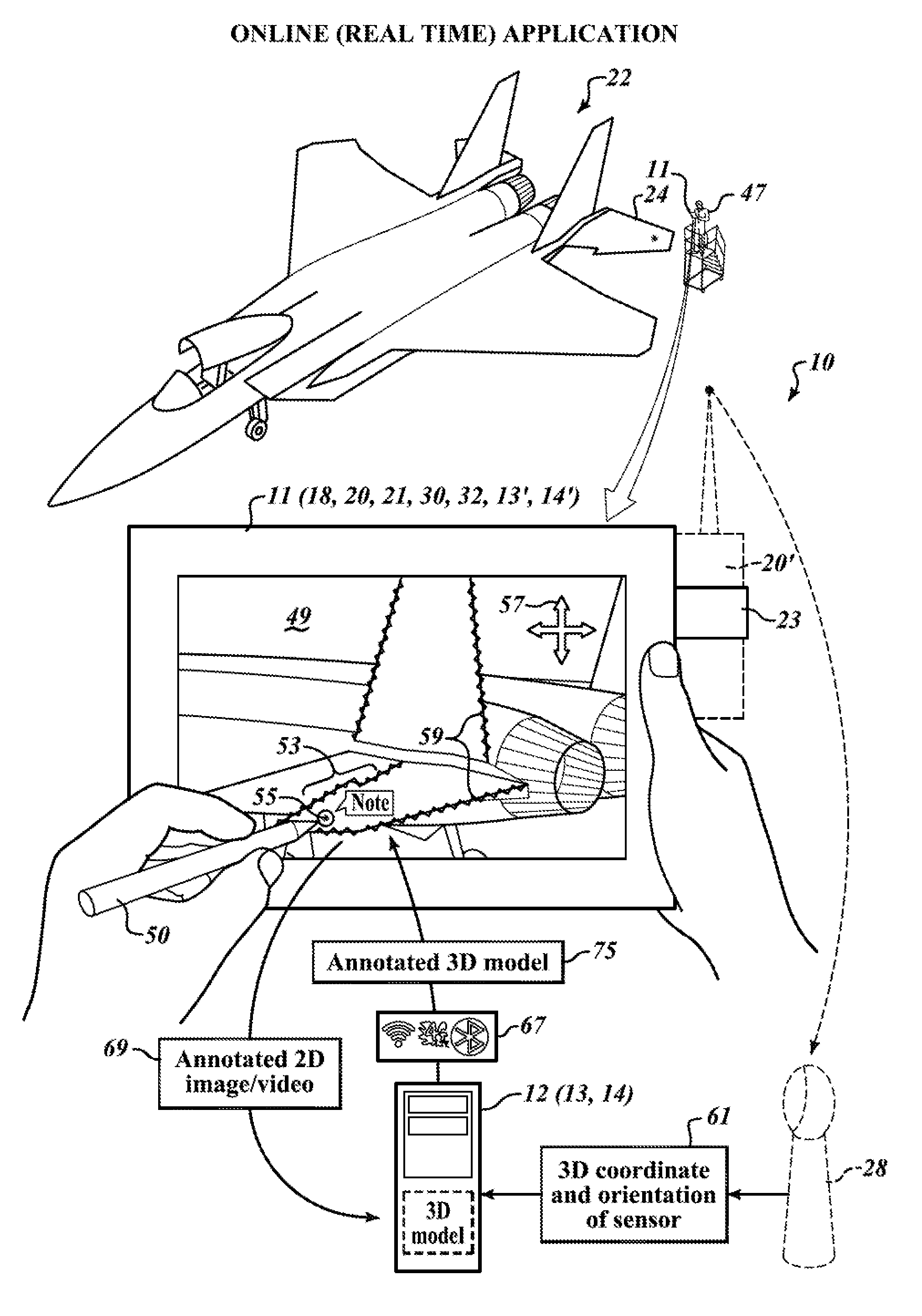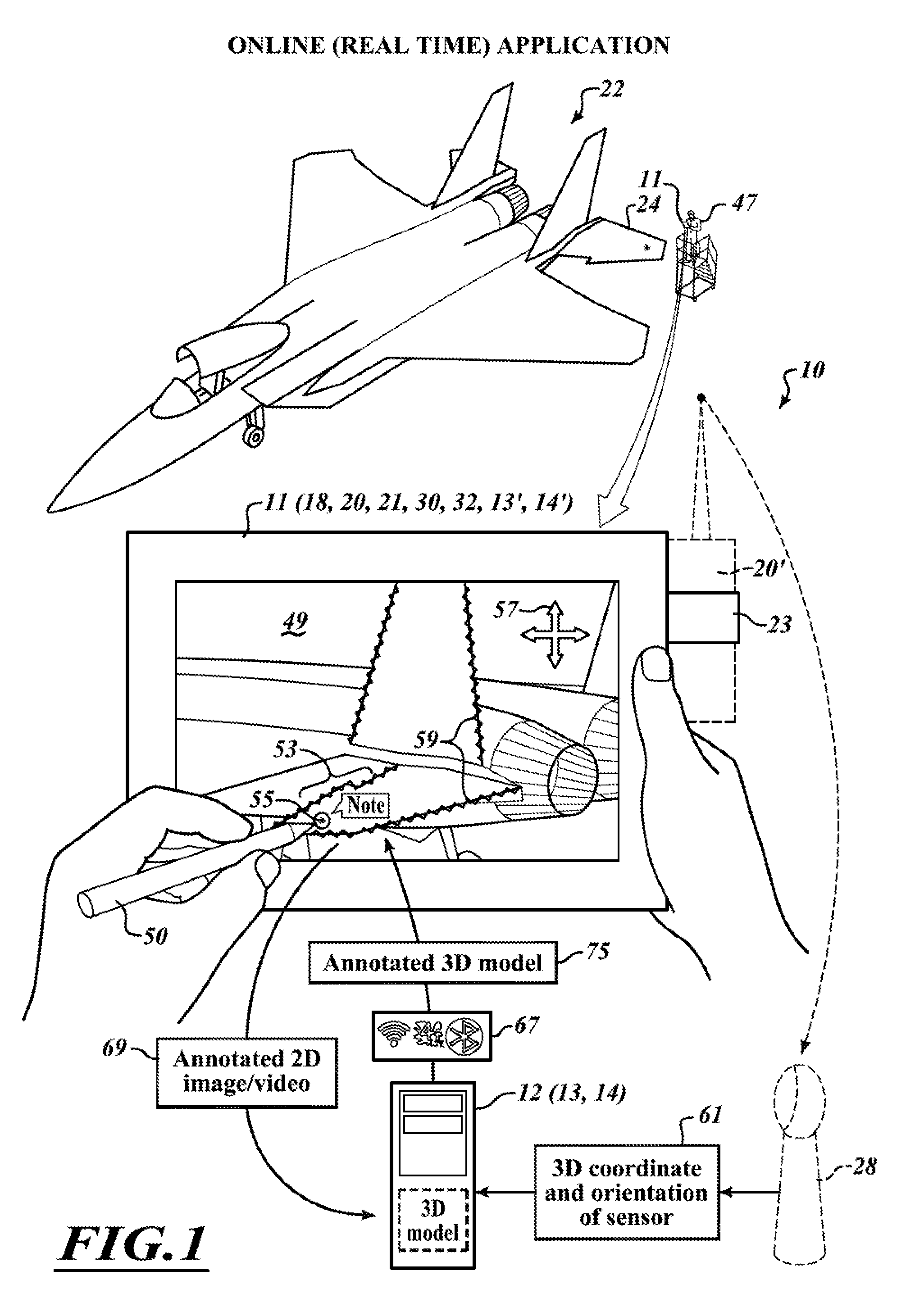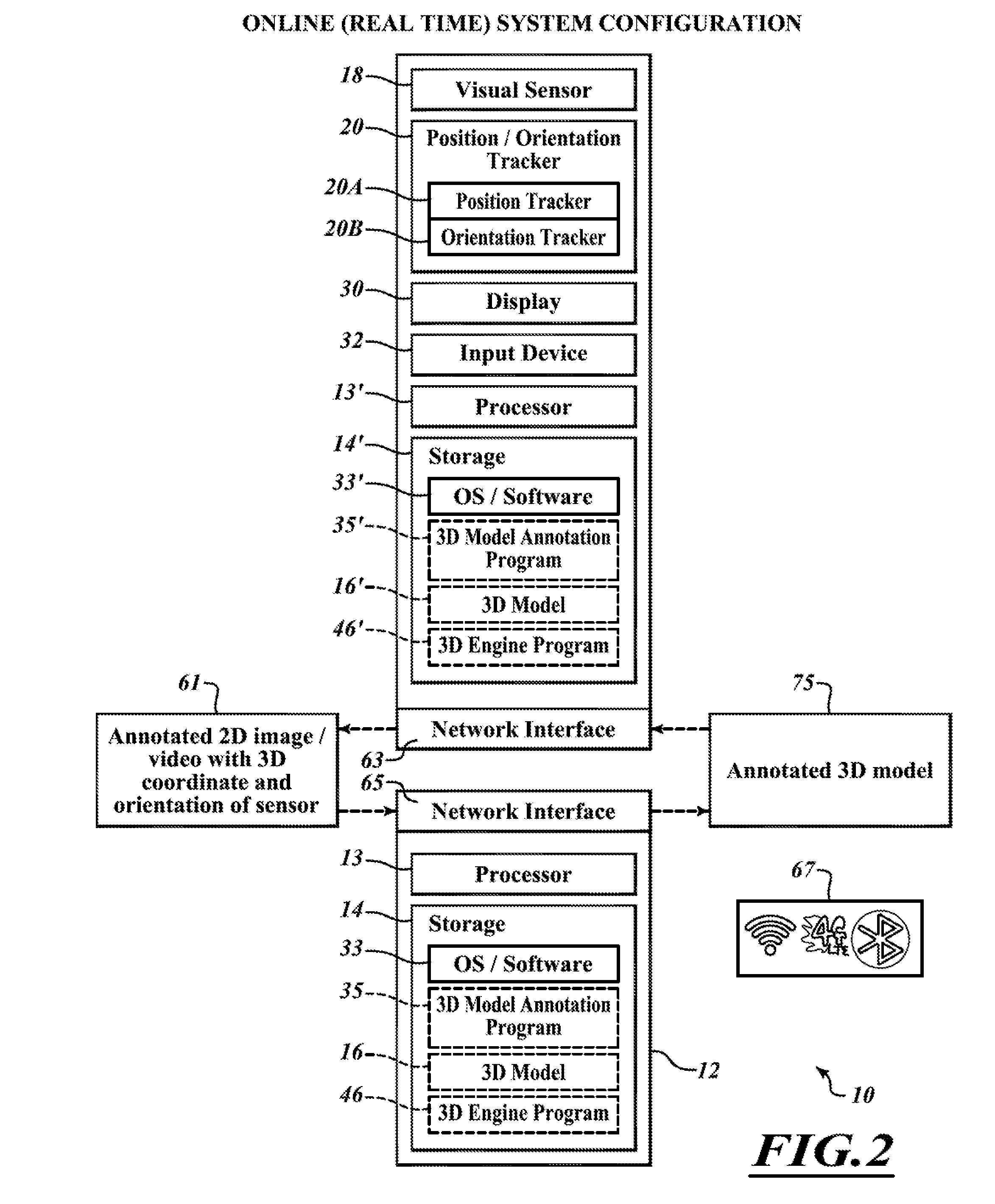Augmented reality (AR) annotation computer system and computer-readable medium and method for creating an annotated 3D graphics model
a 3d graphics model and computer system technology, applied in the field of augmented reality, can solve the problems of cumbersome process, inability to keep accurate maintenance logs for more complicated structures, machinery, etc., and the known methods are not ideal for accurately recording both the type (visual characteristics) and the precise location
- Summary
- Abstract
- Description
- Claims
- Application Information
AI Technical Summary
Benefits of technology
Problems solved by technology
Method used
Image
Examples
Embodiment Construction
[0027]FIG. 1 is a diagram showing an augmented reality (AR) computer system 10, which is suitable for online (real time) mobile application of the present invention to create an annotated 3D model, according to one embodiment. In additional reference to FIG. 2, which is a block diagram illustrating example components included in the AR annotation computer system 10 of FIG. 1, the AR annotation computer system 10 includes a processor 13, and a storage device 14 accessible by the processor 13 and loaded with a 3D model 16 of a real object. As more fully described below in reference to FIG. 4, the 3D model is associated with at least two virtual alignment points 37A, 37B, and 37C, which will be used to merge the 3D model with its corresponding real object.
[0028]Any suitable processor capable of performing computation and calculation needed to manipulate 2D images and 3D models, as will be described below, can be used as the processor 13. For typical applications, a communication server...
PUM
 Login to View More
Login to View More Abstract
Description
Claims
Application Information
 Login to View More
Login to View More - R&D
- Intellectual Property
- Life Sciences
- Materials
- Tech Scout
- Unparalleled Data Quality
- Higher Quality Content
- 60% Fewer Hallucinations
Browse by: Latest US Patents, China's latest patents, Technical Efficacy Thesaurus, Application Domain, Technology Topic, Popular Technical Reports.
© 2025 PatSnap. All rights reserved.Legal|Privacy policy|Modern Slavery Act Transparency Statement|Sitemap|About US| Contact US: help@patsnap.com



